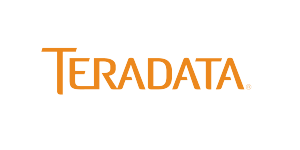This is an excerpt from our recent industry perspective, How Unified Data Architecture Can Revolutionize Analytics in Government. To read the full thing, head here.
To see what a UDA can do to elevate business performance, look no further than the transportation industry. The airlines were one of the first to tackle the concept of growing data volumes. They were the first to demonstrate that with bigger data, solutions aren’t found by just adding more data to existing business approaches, but by finding new ways to embed new data and analytics into most core processes, said Peeter Kivestu, Senior Industry Consultant Transportation at Teradata, in a recent GovLoop online training.
Facing competition from emerging low-cost airlines in the 1980s, established airlines began using booking data for more than just selling seats and checking in passengers. Even though keeping booking data history was considered unimaginably big data at the time, they created new analytics processes for managing pricing and seat availability, and they even invented new value propositions. By capturing and using booking data history, they created the modern-day, mileage-based frequent flyer programs. By simply taking “waste data,” such as a completed booking, packaging it up for individual travelers and sending them monthly statements, they showed how close they were to accumulating enough miles for a free trip.
Applying that kind of thinking to the public sector is what Singapore Land Transportation Authority (LTA), which manages multiple modes of transportation, did with its substantial data collections. They recognized that while they used vast quantities of detail data every day to handle riders, its information technology systems were not designed for analytics, leaving officials with only three months of data online at a given time. That type of limited historical data set was not nearly enough for meaningful analyses, he said.
With that in mind, LTA built a customer-centric analytic solution by integrating anonymized data from disparate systems to get a customer’s perspective on end-to-end travel times across all modes. LTA recognized there was a need to provide for high-volume data crunching under many conditions, ranging from statistical insights to regulatory reporting and predictive analytics, Kivestu said.
The benefit was a single source of people-centered insights that helped LTA focus on making public transport a choice mode.
For instance, there are lessons here for opportunities in public sector highway user experience management. Kivestu added, if you want to know why speed on highways is variable, you need data on volume and traffic incidents and weather to filter out the high-value opportunities and find the insightful information.
“It is through the study of detailed data that new insights emerge,” Kivestu said. “Finding actionable opportunities depends on being able to connect the dots. Oftentimes, in order to use one piece of data, you need other context data.”
In Virginia, transportation officials have turned to variable-toll roads that adjust pricing based on statistics such as time of day (rush hour vs. the middle of the night, for example), volume and speed.
“It all goes back to theories of economics,” Ford said. “If you’re on a very busy road and the traffic flow has degraded and slowed, if there is an alternative that allows you to pay to get out of this situation, you’re probably going to want to pay more for it when the roads are busy as opposed to when they are not busy.”
It sounds simple, maybe even intuitive, but sophisticated analytics are necessary to determine such decisions as what the tolls should be, when they should be changed and what the maximum price is. As roadways get smarter and can determine the amount of traffic flow via sensors both in the roads and individual vehicles, that information must be analyzed in real time to adjust rates accordingly, Ford said.






Leave a Reply
You must be logged in to post a comment.